Is it possible to store potatoes on the balcony in winter and how to do it correctly
Potatoes are an integral part of our diet, so we want it to be of perfect quality, and even better - from our home garden. And if in the private sector there are no special problems with storing potatoes, then residents of multi-storey buildings have a harder time.
Learn from the article how to store potatoes in the winter on the balcony so that it retains its natural taste, marketable appearance and useful properties.
The content of the article
Suitable conditions for storing potatoes on the balcony
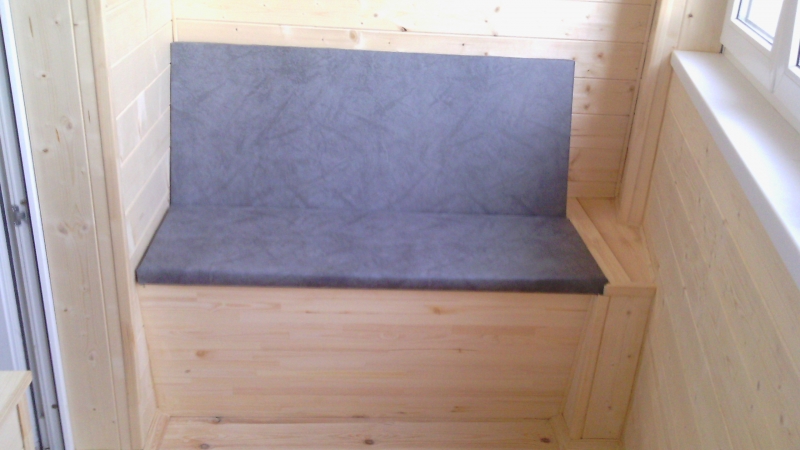
For storing crops, choose a dry, dark room with good air circulation, protected from moisture, dust and insects.
Optimal for storage potatoes are considered temperature + 2 ... + 6 ° C and humidity - 70-80%. If it is too warm in the storage area in winter, the potatoes will "feel" the approach of spring and begin germinate.
At what temperature does potatoes freeze on the balcony? At 0 ° C, the starch contained in the tubers will turn into sugar, and at negative values, the tubers will disappear.
Is there a difference in storage: on a heated and unheated balcony
The recommended storage temperature + 2… + 6 ° C will be constant on the heated balcony thanks to the installed underfloor heating system. In this case, the potatoes are placed in a cardboard box or any ventilated container.
But on an unheated balcony there is a high risk of a drop in air temperature. In this case, to ensure optimal conditions, the container for storage equipped with additional heating.
Is there a difference: glazed and non-glazed balcony
The open balcony is not suitable for storing vegetables in the winter. A sharp strong wind, high humidity, regular temperature drops are destructive conditions for vegetables. Therefore, insulated structures are constructed on such a balcony.
It is forbidden to use electrical appliances, as they will not be able to work normally in an unsuitable place for them.
How long can you keep on the balcony
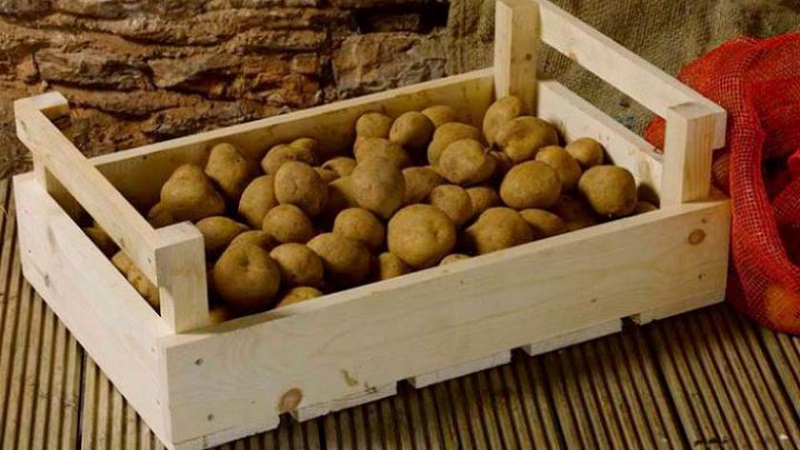
If all the conditions are met, then the potatoes will safely endure the winter and last until spring. The main thing is that the temperature and humidity do not change. An important condition for the preservation of potatoes is systematic airing. Lack of air circulation in the room will lead to the spread of vegetable rot.
Preparing potatoes for storage
Before leaving the potatoes to winter on the balcony, they are prepared:
- Carefully remove the adhering soil from the tubers, without damaging the peel itself, in order to prevent the development of fungal diseases.
- Dry the potatoes thoroughly. In sunny weather, spread a blanket, bedspread, or any other fabric on the balcony floor. The remaining moisture will evaporate, reducing the risk of decay. Dry for 10-14 days.
- Examine the potatoes carefully. If there are signs of rotting on the tubers, discard them. Potatoes with the remaining shovel marks are left, but consumed first.
- Healthy potatoes are collected in a pre-selected and prepared container.
there is ways reduce the risk of potato rotting.To do this, lay on top a layer of beetroot or chopped garlic (for 100 kg of potatoes, 100 g of garlic), as well as leaves of mountain ash, wormwood, elderberry or onion husks.
Preparing the storage container
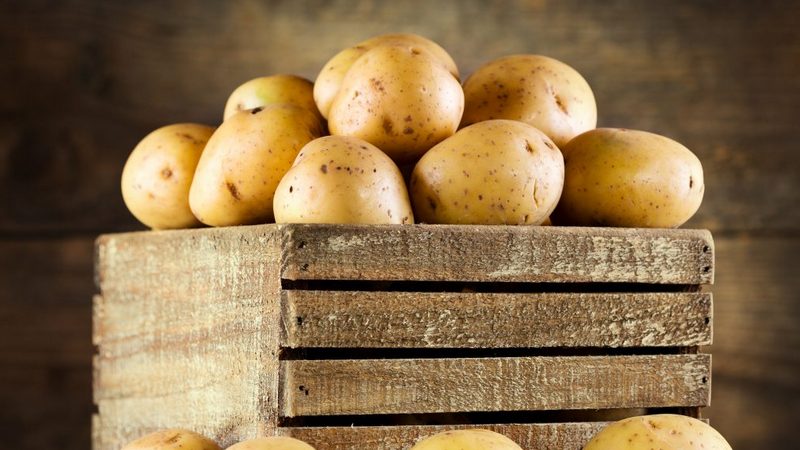
It is important to prepare not only the potatoes themselves, but also the container in which they will be stored throughout the winter. Vegetables are kept in boxes... It is more difficult to ensure full air exchange in bags, and it is much more convenient and faster to collect potatoes from boxes.
First of all, the boxes are disinfected. It doesn't matter if they are new or have been used before. Prepare the mixture yourself. It contains water, soap and soda. If you choose wooden boxes for storage, then they are additionally treated with a solution of copper sulfate (10 g of powder per 1 liter of water) and lime while they dry out.
In addition to boxes, they use plastic containers or a heating cabinet. Some are converting an old refrigerator into a vegetable store. The crop is also stored in a cardboard box.
Wooden box without insulation
A wooden box with a lid is hammered from boards or plywood. The thickness of its walls is at least 5 cm. It is polished, covered with paint or varnish. The storage box should not come into contact with the concrete floor, so it is placed on a slight elevation or on special stands that will provide an air cushion effect.
Thermobox
Thermobox is a ready-made storage, which is also called a thermal cabinet or "winter cellar". This design is available in any specialty store. The advantage is completely autonomous operation. The set temperature is maintained in the box. These drawers have a metal case, and the inside is wooden trim, which is equipped with ventilation, so that vegetables will not "suffocate".
Manufacturers offer a wide assortment - you can easily select a thermobox of the desired size and color.
Container for temporary "overexposure"
This storage method is suitable for those who do not purchase large quantities of potatoes. If your balcony is insulated, then ordinary plastic boxes or bags are enough for a small amount of vegetables.
Homemade box with insulation
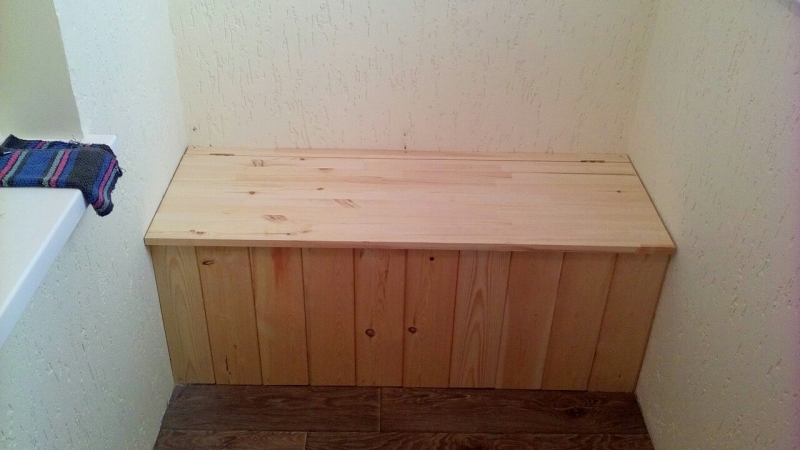
To supply heat to the box, use a 40-60 W incandescent lamp or a low-power hair dryer.
In the second case, air will enter the box with potatoes through the tubes, and switching on and off will be carried out automatically using a thermal relay. This will maintain the recommended temperature range.
What is needed to assemble the structure:
- plywood;
- insulation from 50 mm;
- timber and plastic tubes of 40-50 mm diameter;
- hairdryer;
- electrical contact relay.
It is not recommended to use mineral wool materials, as they absorb moisture. Use penoplex.
Heated drawer assembly technology:
- First of all, make a frame from a bar, fasten the bars to the corners.
- Sheathe the walls of the box, fasten the sheets to the screws. Do not forget to make holes for air supply through the tube.
- Use a utility knife to cut the insulation slab to the desired size. Glue it to the sides of the box itself and to the lid from the inside. You can also sheathe the box with foil isolon.
- Insert the tube into the hole made in the box, and fix it to the hair dryer.
- Make small holes in the tube to distribute warm air evenly inside.
Check all fasteners and all connections for safe, secure use and no short circuits.
There is another, easier way to insulate the potato storage box. Hang an incandescent lamp inside a tin cylinder. Pre-paint the lamp with black, as light adversely affects the condition of the potatoes. Such a lamp does not burn a lot of electricity, and the heat generated is enough to maintain a positive temperature in the storage.
How to protect potatoes from freezing
Freezing of potatoes on the balcony during cold weather is a very common phenomenon.
Here are some tips to avoid this:
- Potatoes that are sent for long-term storage must be dry. Wet freezes and deteriorates much faster.
- The main reason for the freezing of vegetables is the untimely insulation of the storage. If the potatoes received even a slight frostbite, then further actions will no longer have the desired effect.
- Potatoes left for storage on the balcony are left uncovered. This provokes frostbite of the top layer. Cover the storage container with a lid, cotton blanket or mattress.
Additional heating
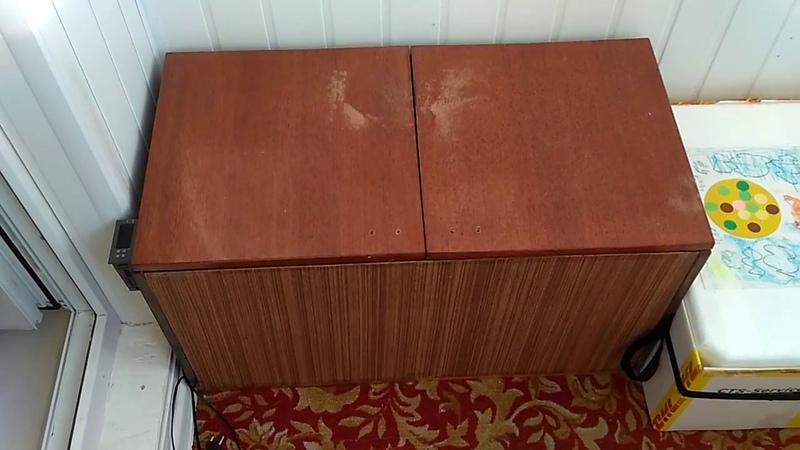
It is much more difficult to keep potatoes on an unheated balcony. In this case, you cannot do with an ordinary box, in which the entire crop will freeze when cold weather sets in.
Insulate boxes made of plywood and boards.
Instruments:
- screwdriver;
- self-tapping screws.
Insulation materials:
- sawdust;
- foam or wood shavings;
- pieces of fiberboard or chipboard, suitable for the size of the frame.
If the box is lined with plywood on both sides, then place insulation between them. Fasten the top with a sheet of plywood to size.
If the container is made of boards, then make the same smaller box and place it inside the large one. Fill the space between them with foam or chips, and make a lid on top. Some people cover it with straw.
Common mistakes
The most common mistakes when storing potatoes:
- Loading tubers into boxes that have not been sorted out before.
- Lack of ventilation in containers where crops are stored.
- Using a dirty box or room.
- Storage of undried wet vegetables, tuber cuttings.
- Incorrectly selected potato variety (early). This will cause rapid damage to the crop.
Conclusion
Potatoes can be stored during the cold season, even if you live in a city apartment. Use the free space on the balcony and make your own containers for storing vegetables. Do not forget to follow all the rules and temperature conditions.
A good alternative is a thermobox, which works autonomously and maintains the set temperature.